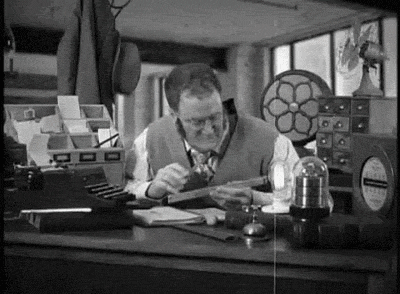Michael Jackson's 'Dangerous' Album Is An Underappreciated Masterpiece
This month marks the 30th anniversary of Michael Jackson's "Dangerous" album.
After wrapping up his "Bad" world tour, Michael Jackson entered a new phase of his life. He purchased his Neverland Ranch and was about to embark on his first adult solo musical project without Quincy Jones. This project would go through several reinventions and delays before ending up as the masterpiece now known as "Dangerous."
Having dominated the eighties, Jackson's record label wanted him to put together a greatest hits collection to celebrate. The album was going to be titled, "Decade: 1979-1989." It was going to be a two-disc set featuring Jackson's greatest hits with some new material. As the title suggests, Jackson planned on releasing this album by the end of 1989. However, due to Jackson's perfectionism, this was delayed and moved to the following year. The title was changed to "Decade: 1980-1990."
In 1990, Jackson complained of chest pains, which caused him to be hospitalized, and the project was put on hold yet again. This time, however, Jackson abandoned the idea of doing a greatest hits completely. Instead, he would make a whole new album. In search of the perfect collaborator, Jackson recruited Teddy Riley. Riley had mastered a new genre which fused dance music with hip-hop, New Jack Swing.
Jackson and Riley collaborated on a number of tracks, including "She Drives Me Wild," "Remember The Time," and "Why You Wanna Trip On Me." The latter of which features Jackson speaking against the media's portrayal of him and urging them to focus on the world's ills instead. It includes a brilliant guitar intro and an equally impressive outro. "Remember The Time" was a huge hit and toyed the line between dance hit and R&B love ballad. Its beat was classic New Jack Swing. You couldn't help but move when you heard it and this may have been Jackson's reason for going in this direction.
Jackson was heavily inspired by this new sound and was particularly fond of his sister Janet's "Rhythm Nation" album. Jackson actually asked his sister to collaborate with him on a song. However, Janet declined, saying she still needed to prove herself as an artist in her own right. The two would eventually write and record the duet, "Scream," for Jackson's 1995 "HIStory" album. Another collaboration that didn't work out for "Dangerous" was with Madonna.
Madonna was approached by Jackson to record a duet for the track "In The Closet." The two were spotted going to dinner at this time and attended the Academy Awards that same year. Madonna was surprised Jackson chose such a provocative title for the song. She then came up with some lyric ideas which Jackson didn't like. According to Madonna, all Jackson wanted was a provocative title, but didn't want the song's lyrics to match. Due to these creative differences, the collaboration never materialized.
One artist Jackson did successfully collaborate with was Slash of Guns N' Roses. Slash played guitar on the track "Give In To Me" and the intro of "Black or White." This would be the start of a friendship which saw Slash contribute to every Jackson album that followed. The song follows the tradition of tracks like "Beat It" and "Dirty Diana," which saw Jackson incorporating rock elements into his music.
In addition to rock and hip-hop, Jackson added a touch of gospel with the Andraé Crouch Choir on "Will You Be There." The choir had previously sung on Jackson's "Man In The Mirror" and later on Madonna's "Like a Prayer." An edited version of the song was later included in the film, "Free Willy." However, the full seven and a half minute album version is required listening. It's the best way to experience the song's brilliance. Jackson's spoken work portion at the end is both beautiful and heartbreaking.
Speaking of "Man In The Mirror," Jackson once again teamed up with its co-writer Siedah Garrett on the track "Keep The Faith." It keeps with the gospel tradition and inspires the listener not to give up in difficult times. It's one of the album's most magical moments and showcases Jackson's vocal talents. His singing is so passionate and aggressive that you can't help but feel motivated while listening.
Jackson had become friends with Ryan White, a young boy who contacted the AIDS virus from a blood transfusion. White had been kicked out of school and attracted media attention during his fight to return to his classes. His determination to be treated just like any other child inspired Jackson. When White passed away, Jackson promised him he would dedicate a song to him on his next album. The track "Gone Too Soon" was written by Larry Grossman and Buz Kohan. Jackson dedicated the song to White and released the single on World AIDS Day, December 1, 1993.
"Heal The World" was a song Jackson wrote about wanting to make the world a better place. Its sentimentality helped it become an international hit. It would later serve as the name for Jackson's very own foundation. It follows Jackson's pattern of message songs like "We Are The World" and "Man In The Mirror." However unpopular this opinion might be, "Heal The World" comes out as the superior song. Just because people are more familiar with the former two, doesn't make them better. Jackson also performed this song when he headlined the Super Bowl halftime show in 1993.
Another highlight of the album was "Who Is It," which showcased Jackson's beatboxing. Beatboxing was a talent Jackson had mastered by this time. This might have a lot to do with Jackson's unconventional method of songwriting. Believe it or not, Jackson never played an instrument or read music. He composed the music of his songs by recording demos where he would make the sounds with his mouth. This obviously included humming and beatboxing. This track brought to light the genius idea of having Jackson's beatboxing be the foundation of the song's beat. Jackson demonstrated his skills during his live interview with Oprah Winfrey in 1993.
By the fall of 1991, Jackson had almost completed crafting an album that was funky, diverse, and deeply personal. It was time to think of an album cover. However, Jackson wasn't interested in doing a photoshoot like he had before. Instead, he commissioned artist Mark Ryden to paint the album's cover. Ryden was inspired by Jackson's own short film for "Leave Me Alone." He also got an early listen to the album's tracks to help him with his process. The result is a brilliant, surreal piece that conveys the mysteriousness of Jackson's image as well as his many sources of creative inspiration.
To celebrate the album's 30th anniversary, Ryden shared never-before-seen sketches he worked on in the cover's early stages via Instagram. "I had 5 days to come up with ideas," Ryden wrote. "I feverishly worked that week and came up with one resolved design per day. The parameters I was given were to focus on Michael's eyes, show the earth in peril, and include kids and animals. I was instructed the image could be scary, but should still be fun. This was the most exciting project of my life up to that point."
The album's launch began with the release of the first short film. When Jackson premiered a new short film, it was a major event. People around the world sat at home and watched in anticipation. This was before YouTube and streaming, so people had to watch what was on television when it aired.
It was decided that "Black Or White" would be the album's first single and, therefore, first short film. The short film included cameos from celebrities such as George Wendt and Macaulay Culkin. It also included a morphing effect that was state-of-the-art in 1991. It featured people of various races and ethnicities morphing into one another, underlining the song's message of racial harmony.
There was controversy, however, with the short film's ending. After the song, we see a panther leaving the set and morphing into Jackson himself. Jackson then begins dancing and eventually goes into a rage, smashing car windows and breaking storefronts. All the while, Jackson was grabbing his crotch during the sequence. The short film ends with Bart Simpson watching the whole thing unfold on television, before Homer walks in to turn it off.
People were less upset with the Simpsons cameos and more concerned with Jackson's display of violence and sexually suggestive dancing. Jackson released a statement apologizing for the sequence and it was later removed from future television airings. It was, however, included on future home video releases with racist graffiti placed on the car windows and storefronts. The point of this was to make the reason for the violence clearer. Jackson said he was raging against racism and bigotry in the sequence.
The "Black Or White" short film set the tone for future films from the album, particularly in regards to celebrity cameos. Eddie Murphy appeared with Iman in "Remember The Time," Naomi Campbell joined Jackson for "In The Closet," and Michael Jordan taught Jackson how to play basketball in "Jam."
There was also the "Dangerous World Tour," which took Jackson across the globe to sold out audiences. His performances got rave reviews and grossed millions, all of which was donated to his Heal The World Foundation. In every city Jackson stopped, he visited children's hospitals, where he brought toys and gifts for the patients. The show in Bucharest was broadcast on HBO to the highest ratings in the station's history at that time.
The one take away from this album and the era associated with it, is how underappreciated it all is. Since Jackson already dominated the music world with albums like "Off The Wall," "Thriller," and "Bad," the public, while still amazed by his talent, seemed less phased than before. This has translated to current conversations about Jackson's career among the general public. You will almost always hear people raving about the former three albums, yet speak very little about this one.
It was even evident in 2016 when Spike Lee, who directed a brilliant documentary on the "Bad" album, decided to make a film celebrating "Off The Wall," even though that year marked the 25th anniversary of "Dangerous." Fans also haven't seen any "Dangerous" reissues from the Jackson estate with the same treatment "Bad 25" received. It would be a dream to have a "Dangerous" re-release complete with unreleased tracks, demos, and unseen behind-the-scenes footage. But it doesn't look like that will be happening any time soon.
All in all, "Dangerous" is an underrated, underappreciated masterpiece. While accepting his 1993 Grammy Legend Award, Jackson called "Dangerous" one of his "most creative efforts." It is hard not to agree with him. While his previous albums may have been more popular, "Dangerous" was a step forward artistically. He took more risks musically and bared his soul in his lyrics. With this album, Jackson reached his artistic peak and its influence is still felt all these years later.
Those who adhere to the popularity hierarchy should give this album a chance. It's a grooving, funky, moving piece of work that will never be duplicated. Michael Jackson was one of a kind and proved it with this album. He was, and always will be, the King of Pop.














 Beauty and the Beast (1991) Phone Wallpaper
Beauty and the Beast (1991) Phone Wallpaper





























































